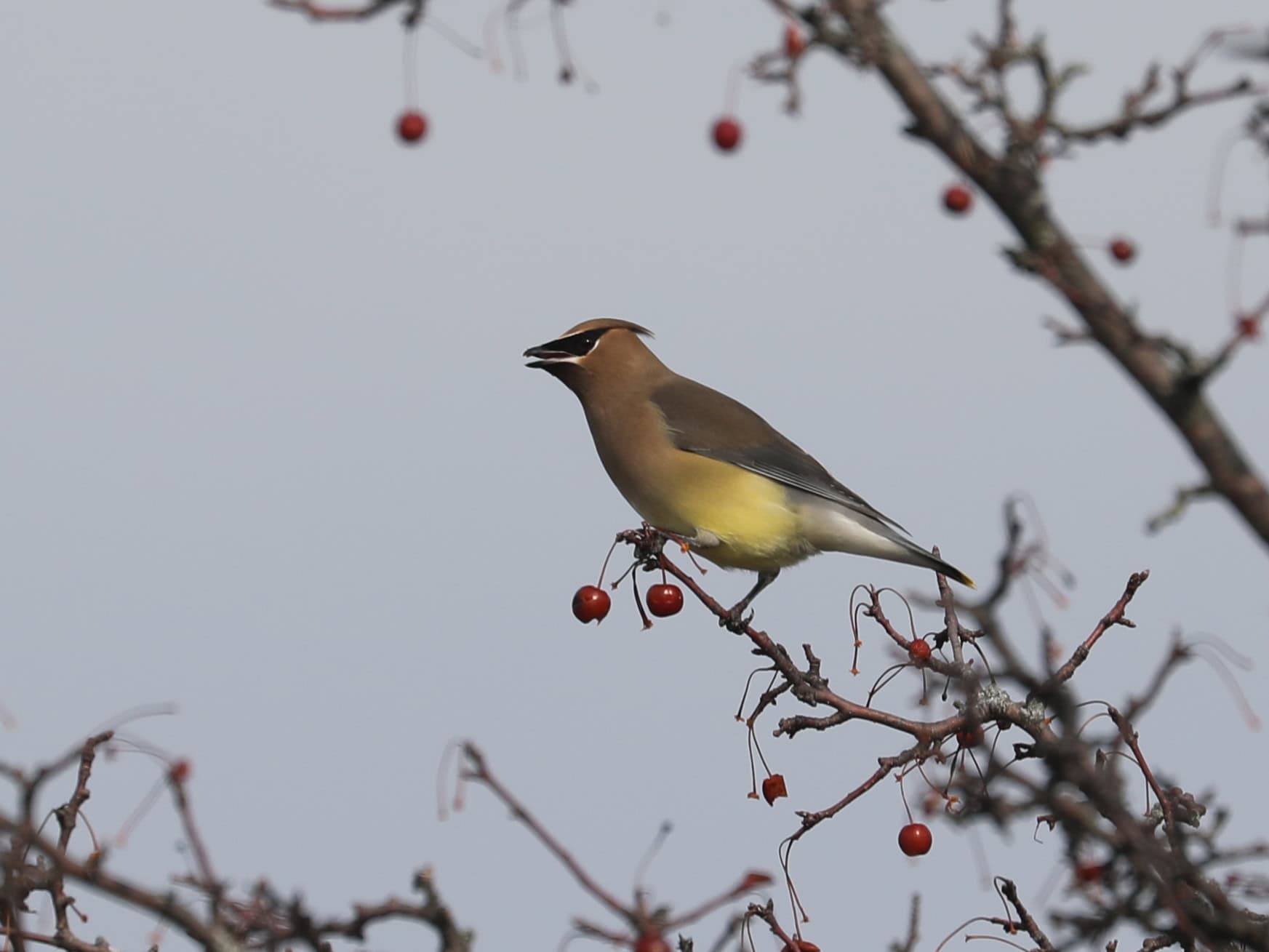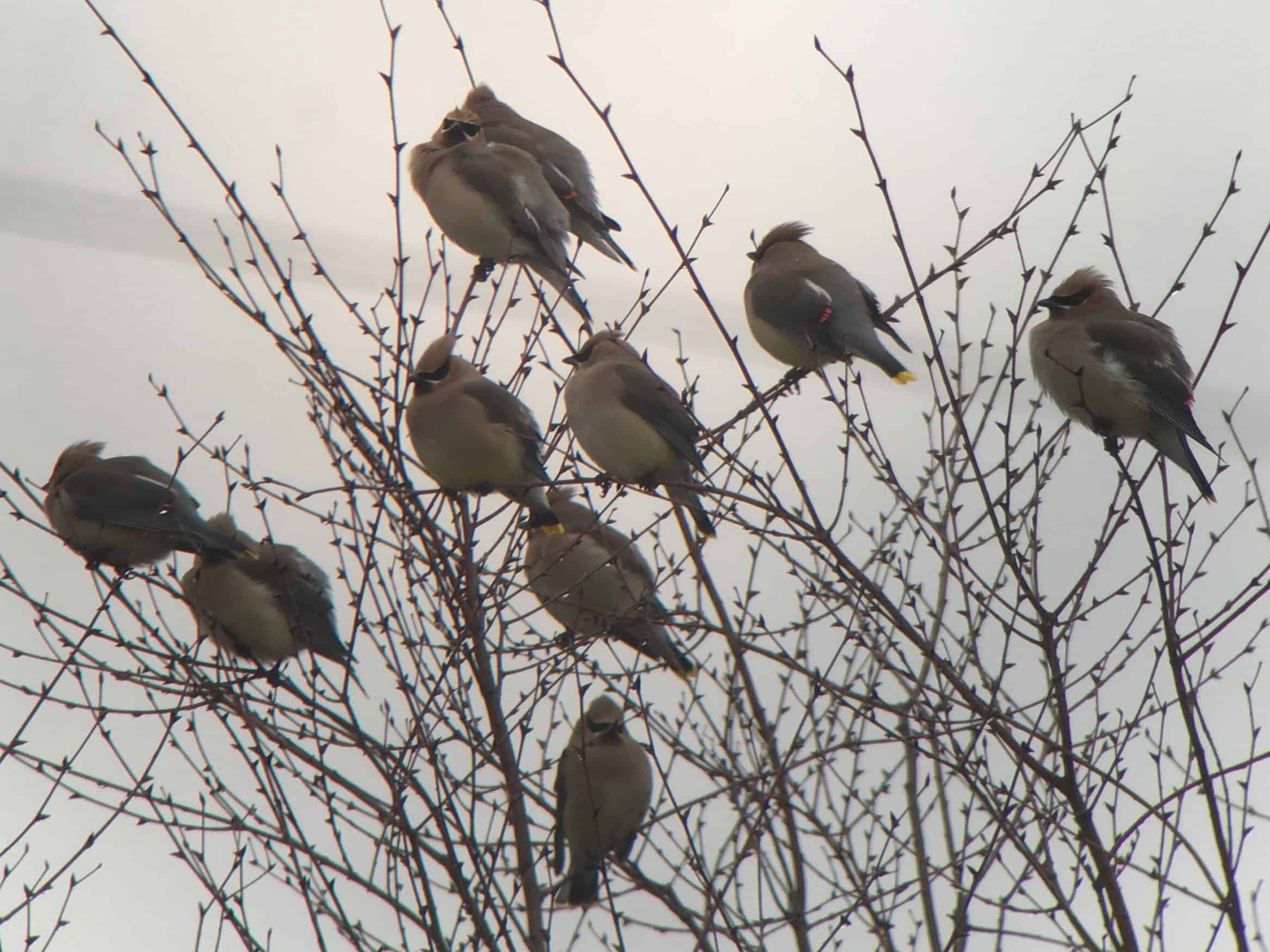Waxwings
My sons and I were taking care of some last-minute Christmas shopping last week when we came across a flock of Cedar Waxwings eating some cherries in trees bordering the parking lot of the mall in Lancaster. Cedar Waxwings nest across the northern half of the United States and the southern third of Canada. During the winter they shift to the south and can be found as far south as Costa Rica and as far north as the southern edge of Canada. They’re here in the Susquehanna Valley year-round. Waxwings mainly eat insects during the nesting season. They’re able to stay this far north in the winter because they change their diet and eat mostly fruit.
Waxwings get their name from little red tips on their secondary wing feathers that look like little drips of wax (they’re actually made of keratin, the same protein that all feathers are made of). There’s no red “wax” on the waxwing in the photo above because it’s so young – it just hatched from its egg this past summer. You can see some red tips on the feathers of three of the birds in the photo below.
There are only three species of waxwings in the world, so we’re lucky to have one here in Pennsylvania. I’ve never seen a Bohemian Waxwing, which nests in northwestern North America, plus all across Eurasia from eastern Russia to Scandinavia. I got to see and even hold some Japanese Waxwings while working as an intern at the National Aviary in Pittsburgh back when I was in high school, but I’ve never made the trip to eastern Asia to see them in the wild.
Waxwings
My sons and I were taking care of some last-minute Christmas shopping last week when we came across a flock of Cedar Waxwings eating some cherries in trees bordering the parking lot of the mall in Lancaster. Cedar Waxwings nest across the northern half of the United States and the southern third of Canada. During the winter they shift to the south and can be found as far south as Costa Rica and as far north as the southern edge of Canada. They’re here in the Susquehanna Valley year-round. Waxwings mainly eat insects during the nesting season. They’re able to stay this far north in the winter because they change their diet and eat mostly fruit.
Waxwings get their name from little red tips on their secondary wing feathers that look like little drips of wax (they’re actually made of keratin, the same protein that all feathers are made of). There’s no red “wax” on the waxwing in the photo above because it’s so young – it just hatched from its egg this past summer. You can see some red tips on the feathers of three of the birds in the photo below.
There are only three species of waxwings in the world, so we’re lucky to have one here in Pennsylvania. I’ve never seen a Bohemian Waxwing, which nests in northwestern North America, plus all across Eurasia from eastern Russia to Scandinavia. I got to see and even hold some Japanese Waxwings while working as an intern at the National Aviary in Pittsburgh back when I was in high school, but I’ve never made the trip to eastern Asia to see them in the wild.
About The Author
Dan Hinnebusch is the Ornithologist for Wild Birds Unlimited. Click to learn more.





